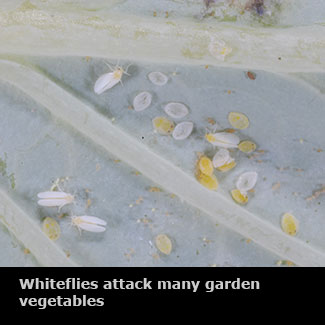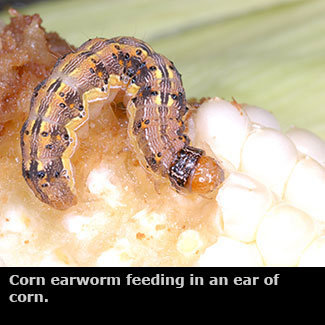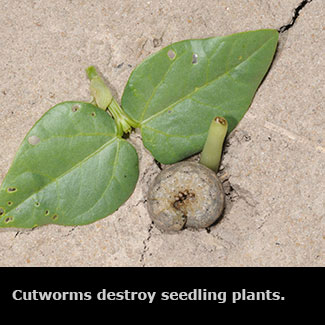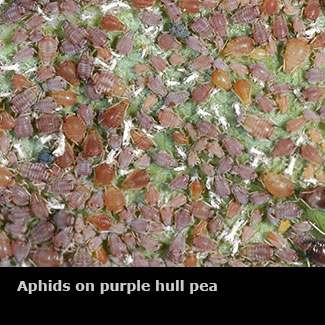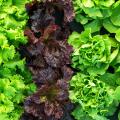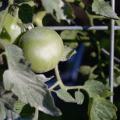Insects Vegetable Gardens
The average home vegetable garden contains more than a dozen different vegetables, and each is attacked by several different insect pests. Insects can damage vegetables in several ways. Some pests, such as cutworms and squash vine borers, attack and kill entire plants. Other pests, like tomato fruitworms, stink bugs, and cowpea curculios, go directly for the fruit. Pests such as aphids and whiteflies cause indirect damage by sucking sap from the leaves, and many insect pests transmit plant diseases.
See Publication 2347, Insect Pests of the Home Vegetable Garden, for information on the identification, management, and control of the most common insect pests in Mississippi gardens. This publication also contains information on the best insecticides for home vegetable gardens and tips on how to apply insecticides. Publication 2347 also contains information on organic insect control. For more detailed information on non-insecticidal management methods see Organic Insect Control for Commercial Vegetable Production. Although this dcoument is written for commercial producers, many of the non-insecticidal management methods discussed also apply to home gardens.
More Information
Fire Ants in Home Vegetable Gardens
Organic Fire Ant Control
Tobacco Hornworm, Vol. 9, No. 08
Two Key Pests of Squash, Vol. 9, No. 10
Tomato Spray Mix, Vol. 8, No. 8
Choosing Insecticides, Vol. 7, No. 14
Squash Bugs, Vol. 7, No. 9
Yellowmargined Leaf Beetle, Vol. 7, No. 3
Pyrethrins vs Pyrethroids, Vol. 6, No. 29
Squash Vine Borer, Vol. 6, No. 10
Granulate Cutworm, Vol. 6, No. 5
Cowpea Curculio, Vol. 4, No. 12
Leaffooted Bugs, Vol. 4, No. 24
Tomato Fruitworm, Vol. 1, No. 10
Publications
News
If you grow your own vegetables, you will likely see at least a few pesky insects that want to feed on your plants. Slugs are one of the pests you may be noticing now.
Mississippi’s ideal growing season means gardens can yield a lot of produce, but this usually comes with the help of pesticides to combat insects and diseases.
It is vital that home gardeners know how much time must elapse between application of the product and when the food is harvested, a time frame known as the pre-harvest interval, or PHI.


